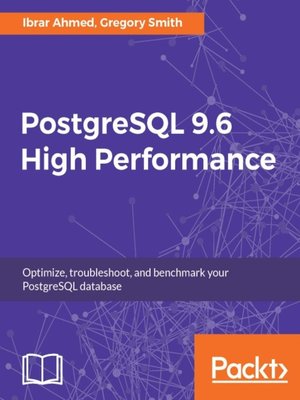
Sign up to save your library
With an OverDrive account, you can save your favorite libraries for at-a-glance information about availability. Find out more about OverDrive accounts.
Find this title in Libby, the library reading app by OverDrive.



Search for a digital library with this title
Title found at these libraries:
| Library Name | Distance |
|---|---|
| Loading... |
Enhance the performance of your PostgreSQL system with this handy guide while avoiding common pitfalls that can slow it down.
About This Book
Who This Book Is For
This book is for intermediate to advanced database administrators and developers who use or plan to exploit the features of PostgreSQL in the best possible manner. While administrators can benefit from the topics related to the installation, configuration, and optimization of the server, developers will learn how to write optimal queries and address performance issues in their database design. This book will also benefit the PostgreSQL internal architects in being able to monitor the performance using benchmarking tools.
What You Will Learn
In Detail
Database administrators and developers spend years learning techniques to configure their PostgreSQL database servers for optimal performance, mostly when they encounter performance issues. Scalability and high availability of the database solution is equally important these days. This book will show you how to configure new database installations and optimize existing database server installations using PostgreSQL 9.6.
You will start with the basic concepts of database performance, because all successful database applications are destined to eventually run into issues when scaling up their performance. You will not only learn to optimize your database and queries for optimal performance, but also detect the real performance bottlenecks using PostgreSQL tools and some external tools. Next, you will learn how to benchmark your hardware and tune your operating system. Optimize your queries against the database with the help of right indexes, and monitor every layer, ranging from hardware to queries. Moving on, you will see how connection pooling, caching, partitioning, and replication will help you handle increasing database workloads.
Achieving high database performance is not easy, but you can learn it by using the right guide—PostgreSQL 9.6 High Performance.
Style and approach
This book has been organized in such a manner that will help you understand basic PostgreSQL 9.6 performance tuning to advanced-level configuration. There are many real-world problems explained in this book and explained in clear language, because improving database performance requires an equal mix of understanding theoretical concepts and working through hands-on examples.







